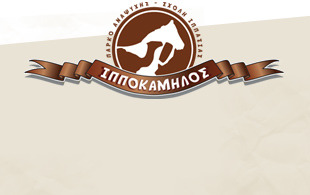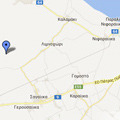Parrots
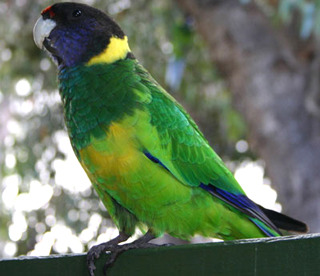 |
Australian Ringneck (Barnasdius Zonarius)The Australian Ringneck (Barnardius zonarius) is a parrot native to Australia. Except for extreme tropical and highland areas, the species has adapted to all conditions. Traditionally, two species were recognised in the genus Barnardius, the Port Lincoln Parrot (Barnardius zonarius) and the Mallee Ringneck (Barnardius barnardi), but the two species readily interbred at the contact zone and are now considered one species. T he subspecies of the Australian Ringneck differ considerably in colouration. It is a medium size species around 33 cm (11 in) long. The basic colour is green, and all four subspecies have the characteristic yellow ring around the hindneck; wings and tail are a mixture of green and blue. This species eats a wide range of foods that include nectar, insects, seeds, fruit, and native and introduced bulbs. |
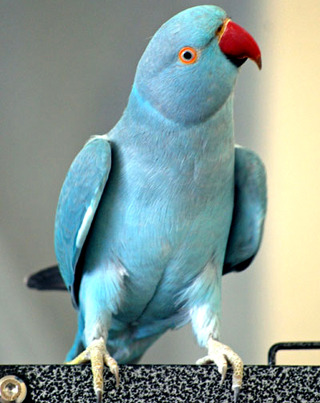 |
Ring-necked ParakeetThe Australian Ringneck (Barnardius zonarius) is a parrot native to Australia. Except for extreme tropical and highland areas, the species has adapted to all conditions. Traditionally, two species were recognised in the genus Barnardius, the Port Lincoln Parrot (Barnardius zonarius) and the Mallee Ringneck (Barnardius barnardi), but the two species readily interbred at the contact zone and are now considered one species. The subspecies of the Australian Ringneck differ considerably in colouration. It is a medium size species around 33 cm (11 in) long. The basic colour is green, and all four subspecies have the characteristic yellow ring around the hindneck; wings and tail are a mixture of green and blue. This species eats a wide range of foods that include nectar, insects, seeds, fruit, and native and introduced bulbs. |
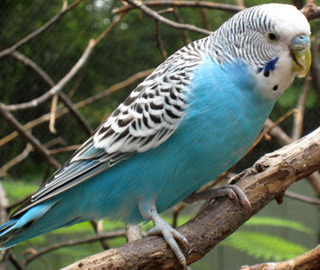 |
Budgerigar (Melopsittacus Undulatus)The Budgerigar or Common Pet Parakeet (Melopsittacus undulatus), often called a budgie or parakeet, is a small parrot and the only species in the Australian genus Melopsittacus. A small long-tailed predominantly green and yellow bird with black scalloped markings on the wings and shoulders in the wild, the Budgerigar has been bred extensively with a profusion of colour forms resulting. Thus, aviary birds may be blue and white, all yellow, all white, or various other combinations thereof. Some have even been bred with small crests. In the wild, it is a predominantly seed-eating species. The budgerigar is found throughout the drier parts of Australia and has survived for the last five million years in the harsh inland conditions of that continent. Budgerigars in their natural-habitats of Australia average 18 cm (7 in) long, weigh 30-40 gr. In captivity, budgerigars live an average of five to eight years, but are reported to occasionally live to 15-20 if well cared for. They lay 4-6 eggs which are incubated for 18–21 days, with the young fledging about 30 days after hatching. The eggs will take about 18–20 days before they start hatching. The hatchlings are altricial blind, naked, totally helpless, and their mother feeds them and keeps them warm around the clock day and night. |
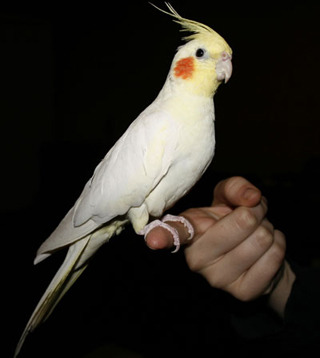 |
CockatielThe Cockatiel (Nymphicus hollandicus), also known as the Quarrion and the Weiro, is the smallest cockatoo endemic to Australia. They are prized as a household pet and companion parrot throughout the world and are relatively easy to breed. As a caged bird, cockatiels are second only in popularity to the Budgerigar. Cockatiels are native to the outback regions of inland Australia, and favour the Australian wetlands, scrublands, and bush lands.They have grey or white plumage, yellowish head and grey legs. Cockatiel has long tail feathers roughly making up half of its total length. They also have an orange spot in their cheeks, and a gray colored crest. At 300 mm to 330 mm (12 to 13 ins), the Cockatiel is the smallest and only parakeet type of Cockatoo species. The Cockatiel's lifespan in captivity is generally given as 15–20 years. |
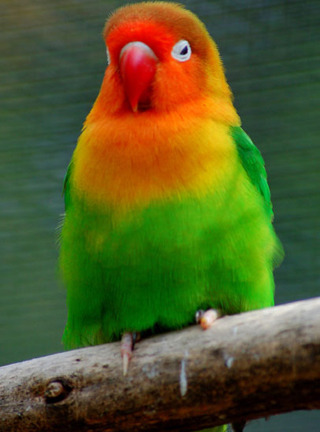 |
Fischer's LovebirdThe Fischer's Lovebird (Agapornis fischeri) is a small parrot species of the Lovebird genus. They were originally discovered in the late 1800s, and were first bred in the United States in 1926. They are named after German explorer Gustav Fischer. The Fischer's Lovebird has a green back, chest, and wings. Their necks are a golden yellow and as it progresses upward it becomes darker orange. The top of the head is olive green, and the beak is bright red. The upper surface of the tail has some purple or blue feathers. It has a white circle of bare skin (eyering) around its eyes. Young birds are very similar to the adults, except for the fact that they are duller and the base of their mandible has brown markings. They are one of the smaller lovebirds, about 14 cm (5.5 in) in length and 43-58 g weight. Fischer's Lovebird are native to a small area of east-central Africa, south and southeast of Lake Victoria in northern Tanzania. They eat a wide variety of foods, including seeds and fruit. |
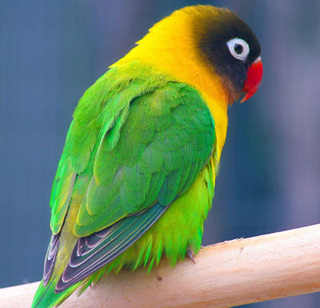 |
Masked LovebirdThe Yellow-collared Lovebird (Agapornis personatus), also called Masked Lovebird or Eye Ring Lovebird, is a monotypic species of bird of the lovebird genus in the parrot family. They are native to northeast Tanzania, and they have been introduced to Burundi and Kenya. The Yellow-collared Lovebird is a mainly green small parrot about 14.5 cm (5.5 in) long. It upper parts are a darker green than its lower surfaces. Its head is black, and it has a bright red beak and white eyerings. Yellow on the breast is continuous with a yellow collar and an expansion of yellow over the nape of the neck. Male and female have identical external appearance. The eggs are white and there are usually four to five in a clutch. The female incubates the eggs for about 23 days and the chicks leave the nest about 42 days after hatching.The blue mutation was originally found in wild birds in the 1920s and is the oldest colour mutation known in the lovebird genus. |
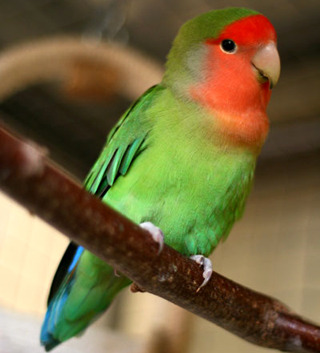 |
Rosy Faced LovebirdThe Rosy-faced Lovebird (Agapornis roseicollis), also known as the Peach-faced Lovebird, is a species of lovebird native to arid regions in southwestern Africa such as the Namib Desert. The Rosy-faced Lovebird is a fairly small bird, 17–18 cm long with an average wing length of 106 mm and tail length of 44–52 mm.[4] Wild birds are mostly green with a blue rump. The face and throat are pink, darkest on the forehead and above the eye. The bill is horn coloured, the iris is brown and the legs and feet are grey. 4-6 eggs are laid between February and April. They are dull white and measure 23.5 mm by 17.3 mm. They are incubated for about 23 days. The young birds fledge after 43 days. Rosy-faced Lovebirds require a variety of foods, including vegetables, seeds, and fruits. |
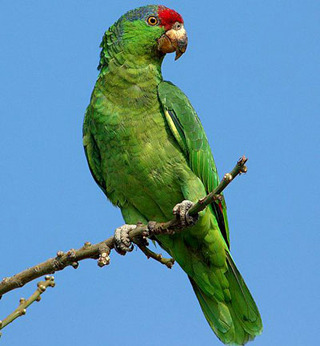 |
Red-headed LovebirdThe Red-headed Lovebird (Agapornis pullarius) also known as the Red-faced Lovebird is a member of the genus Agapornis, a group commonly known as Lovebirds. Like other lovebirds it is native to Africa. The Red-headed Lovebird is 15 cm (6 inches) long. It is a mostly green parrot. It has a well demarcated red area on its head extending from the top of the beak, over the forehead to mid-crown, and extending to the left and right up to the eyelid margins. The have grey feet. The underside of the wings are a lighter green. The female has orange head colouring, which is less well demarcated than the males red head. The adult male has a red beak and the female has a paler red beak. It makes its nest in a termites nest usually in a tree or sometimes on the ground. To make a nest the female digs a tunnel up to a length of 30 cm in the termites nest in a colony with other lovebirds. |
 |
Scarlet MacawThe Scarlet Macaw (Ara macao) is a large, colorful macaw. It is native to humid evergreen forests in the American tropics. Range extends from extreme south-eastern Mexico to Amazonian Peru, Bolivia and Brazil in lowlands up to 500 m (1,640 ft) (at least formerly) up to 1,000 m (3,281 ft). Their plumage is mostly red combined with blue, yelow and green. Scarlet Macaws eat mostly fruits and seeds, including large, hard seeds.The Scarlet Macaw can live up to 75 years in captivity, although, a more typical lifespan is 40 to 50 years. The Scarlet Macaw lays two or three white eggs in a tree cavity. The female incubates the eggs for about 28 days, and the chicks fledge from the nest about 90 days after hatching, and leave their parents about a year later. |
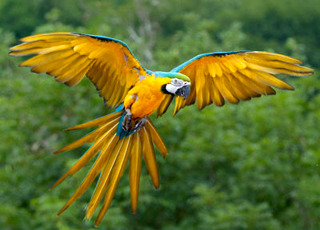 |
Blue and Yellow MacawThe Blue and yellow Macaw (Ara ararauna), also known as the Blue and gold Macaw, is a member of the group of large Neotropical parrots known as macaws. It breeds in forest and woodland of tropical South America from Trinidad and Venezuela south to Brazil, Bolivia, Colombia, and Paraguay. It barely extends into Central America, where restricted to Panama. It can reach 76–86 cm (29.9-33.9 inches) long and weigh 900 to 1300 g (2-3 lbs). It is vivid in appearance with blue wings and tail, dark blue chin, golden under parts and a green forehead. Its beak is black, and very strong for crushing nuts. The naked face is white, turning pink in excited birds, and lined with small black feathers. The Blue-and-yellow Macaw generally mates for life. It nests in a tree hole and the female typically lays two or three eggs. The female incubates the eggs for about 28 days, and the chicks fledge from the nest about 90 days after hatching. It is fed with seed, nuts, dried fruits, fresh vegetables and fruits. |


